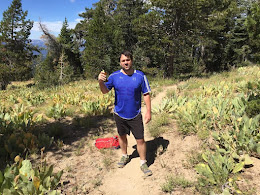First: I've noticed that on days when it's cloudy or rainy, the gap between the high and low temperature is smaller. This is not surprising of course - water has a high specific heat, and the higher the specific heat of the atmosphere, the more energy must be added or removed to change the temperature a given amount. This is also consistent with areas near the coast with weather incoming from the ocean having more moderate weather, ie, the West Coast is much more moderate than the same latitude on the East Coast.
I used weather data for Pennsylvania, because I was curious about specific things in Pennsylvania, not just this abstract question. I used Weather Underground weather data from Lehigh Valley International Airport Weather Station (KABE). I only looked back the last two years because I couldn't find any way to get historical data other than painfully cutting-and-pasting monthly data from a screen. (If you know a better way, please comment!)
Indeed, I did find that the relationship between average daily relative humidity and the absolute difference between high and low temperatures (moisture to temp range) is negative. The more moisture, the less temperature gap - but the linear relationship is not great, with an R^2 of only 0.0853.
The linear regression shows that the temperature gap closes by about a sixth of a degree Fahrenheit for every 1% increase in relative humidity. The intercept is a 29.4 F temp range, i.e. 0% relative humidity would give us a 29.4 F change.
However, unexpectedly, the same comparison using temperature gap in terms of % difference from max (relative to absolute zero) produces a positive relationship with better fit. And looking at the relationship between high temperature and temp gap, it actually predicts temperature better than relative humidity.
While I didn't do a chi-squared, for what it's worth the average daily temperature gap closes form 20.6 to 15.5 degrees F on days with precipitation.
Second: Stretches of consecutive dry days. California has whole summers without a drop of rain, as a matter of course. When it rains during the summer it's a newsworthy event, and people have unwieldy explanations for what must be happening (hearing rain one summer night, I assumed it was just leaves falling. "That's a lot of leaves," I told myself, "The trees will be bare by morning.") But I was curious about the same question in Pennsylvania. Of course, this is not kept as a running tally - the only systematic way of getting this answer is to look at all weather data and then automate counting days with zero precipitation. For 2019-2020, the longest stretch without rain was 15 days in late September of 2020. During the summer, there are runs of up to 7-8 days without rain. How can people plan anything outdoors in that kind of climate?!? What a hell-scape! I did find this record showing zero precipitation in the month of October 1963, beginning a historic drought. (By comparison, California can have 200+ days of no rain.)
I was also curious about frost-free days, as well as stretches of days entirely below freezing. Of course, it does get cold in the winter in PA, but actually it usually goes above freezing during the day. The growing season - the frost-free season, how many consecutive days entirely above freezing, was 180-some days both years. Both years, the last frost was mid- to late April, first one is late October/early November. Given climate change, it's not surprising that Allentown is shown in a shorter growing season zone than this on this map (you can see it better at accuracyproject.org.)

There aren't many stretches of consecutive days in SEPA when the temperature doesn't get ABOVE freezing at all - maximum stretch in those two years was 5 days. To my mind this is the real measure of the "endurability" of a climate. It's 40 F? Fine, put on a fleece to go running, you'll be fine. And indeed, here there were mostly a few 1-3 day stretches. Compare that just to Fairbanks Alaska's last full winter of 2019-2020, when there were 114 days where the temperature did not go above freezing at all - and that's just because of a single balmy day in late November when it got up to 37 F, and before that it hadn't been above freezing since Halloween.

